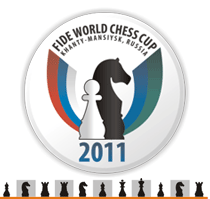Khanty-Mansiysk is the administrative center of Khanty-Mansiysk Autonomous Okrug — Ugra. The city with the population a bit more than 76 000 people is located on West Siberian Plain territory, on the right bank of Irtysh River, 20 km from its confluence with the Ob.

Climate
The total area is near 338 km2. According to the international standard, Khanty-Mansiysk belongs to Yekaterinburg Time Zone +5:00. The time difference with Moscow is +2 hours. It snows for almost a third of the year and the snow cover reaches 1 meter high here. In winter with low humidity (near 80%) the temperature falls down to 40ºC below zero. The average temperature varies from −20ºC to −25ºC. Although one shouldn’t think that Siberia doesn’t gladden its citizens with warmth of summer days. The temperature in July can reach up to 35ºC above zero. The average temperature of summer months is 20ºC — 25ºC. The warmest months are June and July, August marks the early spring, rainy season and the relatively low temperature 15ºC.

Sport glory
The administrative center of Ugra has hosted different sport events of international, Russian and regional level since 2000. They are World Cups Biathlon, World Championships Biathlon (2003 and 2011). World Cross Country skiing competitions were also held in Khanty-Mansiysk (Grand-Prix Final «Sprint Tour 2008»).

Although the capital of Ugra is famous not only for winter sports. There were World contests on water polo, Russian competitions on body-building, snowboarding, synchronized swimming, lawn-tennis, show jumping, track and field athletics, boxing and other popular sports. Besides Khanty-Mansiysk has its own professional hockey club «Ugra», which represents the city in Continental Hockey League.

It is worth paying particular attention to the development of Chess. In 2010 chess craftsmanship was taught in 55 schools of the autonomous okrug as extra lessons and in 110 schools of Ugrachess craftsmanship was taught as out-of-school activity. Besides in 2007—2010 in Khanty-Mansiysk Autonomous Okrug there were created 29 Internet-centers of chess craftsmanship.

Hosting of World Championships and Tournaments contributed to wide-spread occurrence of chess culture. Beginning from 2005 Khanty-Mansiysk hosts World Chess Cups (2005, 2007, 2009). In 2010 Khanty-Mansiysk hosted intellectual contest — the 39th World Chess Olympiad. 160 man and 120 women teams came to the city. The Assembly and the 81st FIDE Congress took place at the same time. During the Olympiad more than 3000 visitors were staying in Khanty-Mansiysk, and more than 2000 of them were taking part in the competition and its preparing. The future of Ugra as chess region also means the hosting of World Chess Cup 2011 and World Chess Championships 2012 among women.

Regional ethnography
Khanty-Mansiysk is located on seven hills. It is called a «green island», as its residential areas are mixed with cedar forest on the territory of the nature park «Samarovski Chugas». The ethnographic open-air museum «Torum Maa», mountain-skiing complexes «Khvoiny Urman» and «Kedrovy», tubing track, Winter Sports Center named in honour of A. Filipenko, ski tracks of Children and Youth Sport School of the Olympic Reserve are on its lands.

It is worth mentioning that the name «Samarovski Chugas» was borrowed from indigenous peoples — khanty and mansi. In Irtysh khanty dialect «Chugas» means «a high river bank, covered with taiga». It is called «Samarovski» due to Samar, khanty prince of Belogorsky princedom. At the second half of XVI century he founded a town Samar-vosh at the place of Khanty-Mansiysk historical center. Russians had started to develop this territory since the end of the XVI century, but the settlement continued till the middle of the XX century. In 1940 the settlement Ostyako-Vogulsk was renamed Khanty-Mansiysk. In 1950 the settlement got the status of a city. The southern part, Samarovo, was also annexed.

Nowadays hardly anything can remind about those old days. The city is developing rapidly and taking shape not only as the capital of the oil region. It becomes the center of business activity, elite sport, national culture and tourism.




















